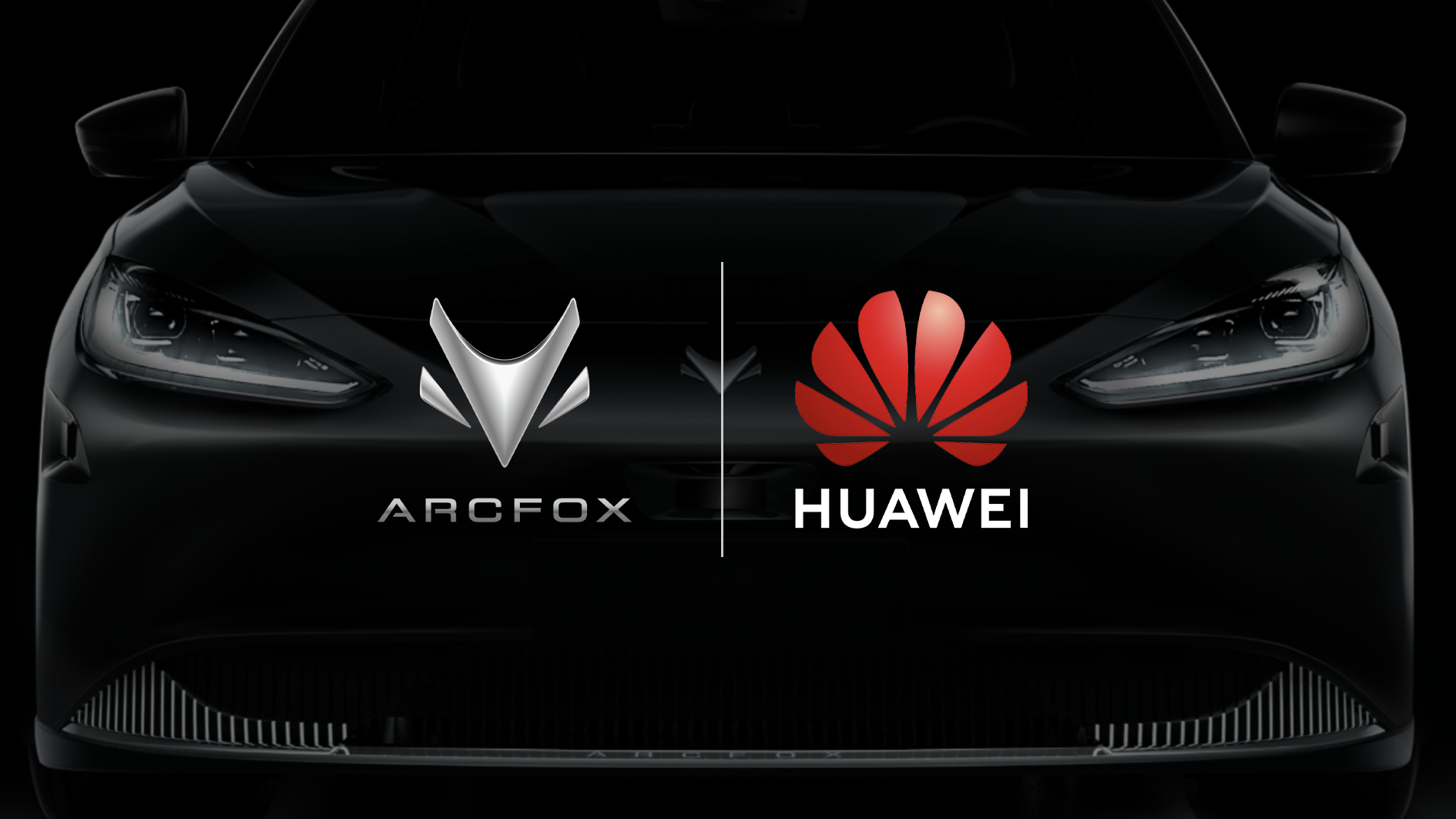On the afternoon of April 6th, Huawei Intelligent Automotive Solution’s official Weibo account released the following preheating image. Although appearing dull to the average person, by evening, the image had spread throughout the automotive industry.
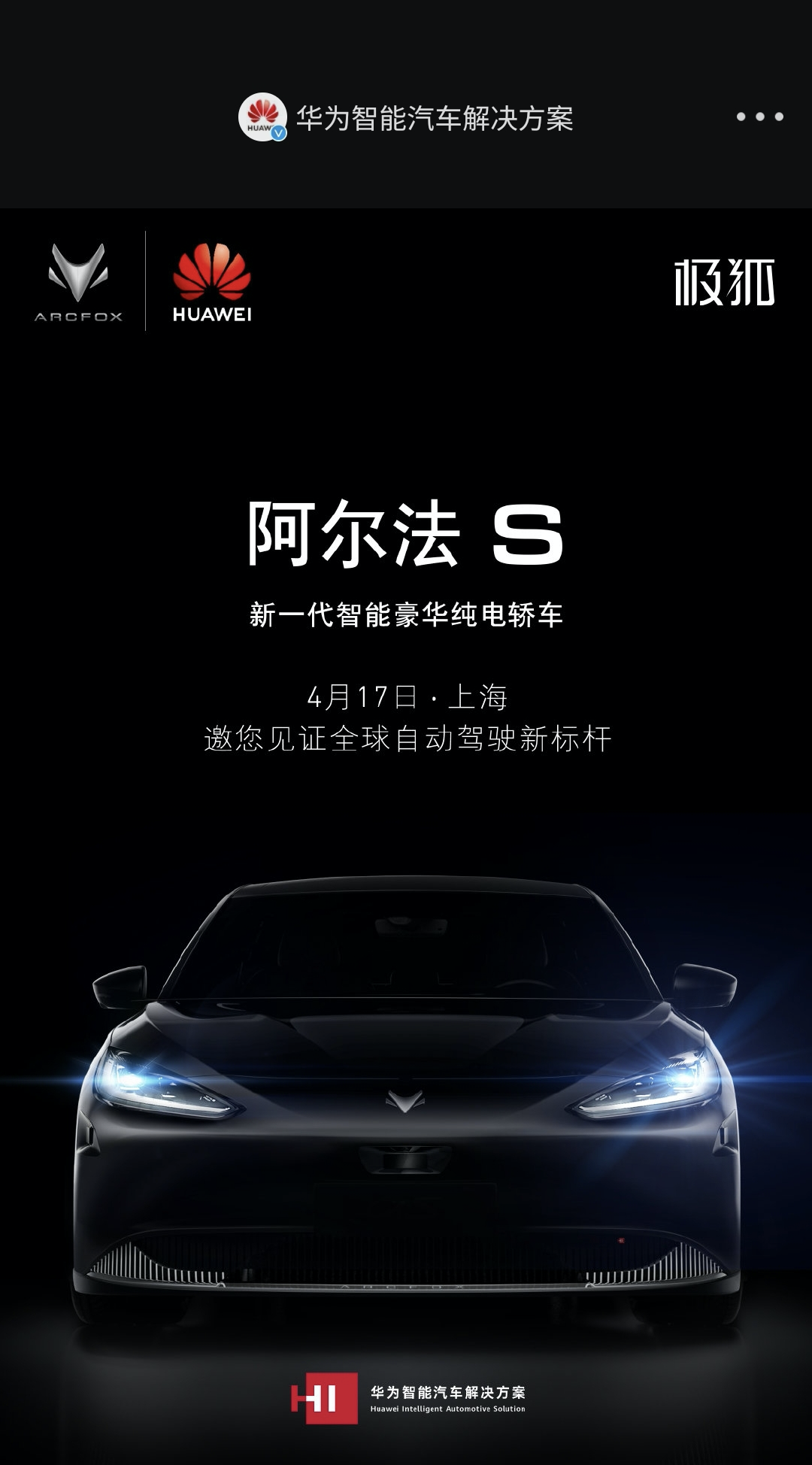
Upon closer inspection, it’s apparent that there is a lot of information in this image. First and foremost, the focal point is the new Alpha S by sub-brand PIVO, while the small font in the center of the image boldly reads “New Benchmark for Autonomous Driving.”
To be honest, it is not uncommon for manufacturers to promote their ADAS capabilities over the past few years, but this time when I saw the word “Autonomous Driving” again, I didn’t rush to criticize like before because I noticed that the Huawei logo in the upper left-hand corner of the image was placed side by side with the PIVO logo this time.
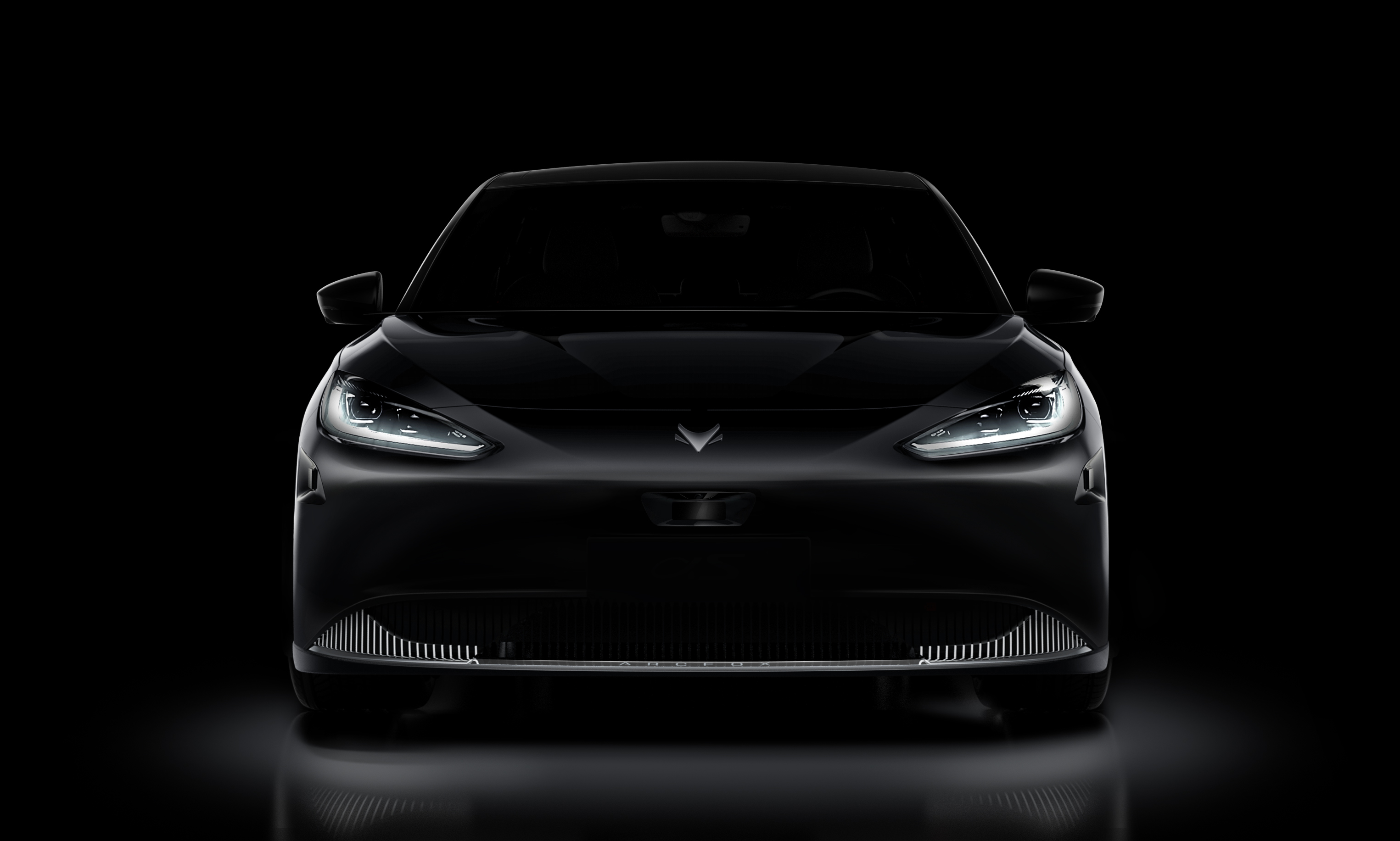
Further scrutiny also reveals that the Alpha S in the image is equipped with three square, solid-state lidars arranged around the bumper beneath the headlights.
There’s also a highly overlooked but important detail at the bottom of the image—a brand logo for Huawei Intelligent Automotive Solution, “HI.”
The Alpha S beneath the HI logo
The voice of “Huawei’s automobile manufacturing” has been frequenting the media in recent years, and the reason for this is due to Huawei’s significant involvement in the intelligent automotive business.
- Huawei officially established its automotive business unit in May 2019
- Huawei released the car-mounted version of HarmonyOS in August 2020
- Huawei Electric Technology Co., Ltd. was established in September 2020
After a series of moves, in October 2020 at the Smart Car Solution Ecology Forum, Huawei announced that it had invested over $500 million in the automotive business unit in 2020.
After all those actions, on October 30th of the same year, Huawei officially launched the brand “HI” (HUAWEI Intelligent Automotive Solution), which is the logo at the bottom of the first image, during the highly anticipated Mate 40 launch event.
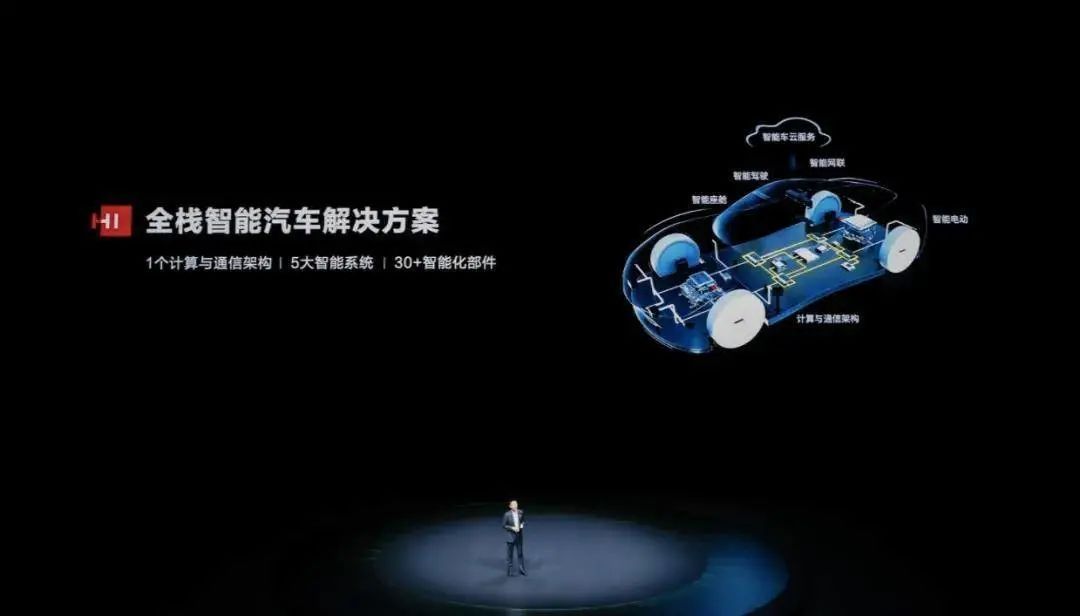 # HI, Huawei’s Full-stack Intelligent Car Solution
# HI, Huawei’s Full-stack Intelligent Car Solution
HI is Huawei’s full-stack intelligent car solution that covers a new computing and communication architecture, as well as five intelligent systems: intelligent driving, intelligent cabin, intelligent electric, intelligent connected, and intelligent car cloud. Additionally, it includes a full set of intelligent components such as AR-HUD and LiDAR. In short, HI represents the current complete version of Huawei’s intelligent car solution, and it was certified at the debut of Alpha S by JAC.
Huawei’s collaboration with BAIC Group can be traced back to September 2017 when the two companies signed a strategic cooperation agreement on product innovation and technology research and development. This was also Huawei’s first strategic agreement with a domestic automaker.
On January 28, 2019, BAIC and Huawei signed a comprehensive business cooperation agreement to jointly establish the “1873 Davidson Innovation Laboratory.” It was on that day that the two parties officially confirmed the first product collaboration project using the HI solution, known as N61AB-HBT, which is today’s Alpha S HI version.
The first prototype of HBT was unveiled on September 23, 2019; since then, Huawei and JAC have completed extensive testing and verification of the car. The upcoming Alpha S HI version is a poised product ready for launch.
As a deep collaboration between the two companies, the Huawei version of Alpha S with HI solution aims to achieve remarkable progress in intelligent driving.
Comprehensive Perception Beyond LiDAR
HBT uses Huawei’s ADS full-stack intelligent driving solution, and the most prominent sensory hardware is three LiDARs. The performance specifications of these three 126-line LiDARs are as follows:
- Field of View (FOV): Horizontal 120° × Vertical 25°
- Maximum Detection Range: 200 m
- Detection Accuracy: ±3 cm ≤ 100 m, ±5 cm ≥ 100 m
- Detection Frame Rate: 10 Hz
LiDAR has high detection accuracy and good light adaptation for 3D environments. The Huawei version of Alpha S is designed with a unique layout of LiDARs in the left, center, and right directions. This layout allows the Alpha S to have a better perception of the environment for lateral situations compared to the conventional front-only arrangement of LiDARs.
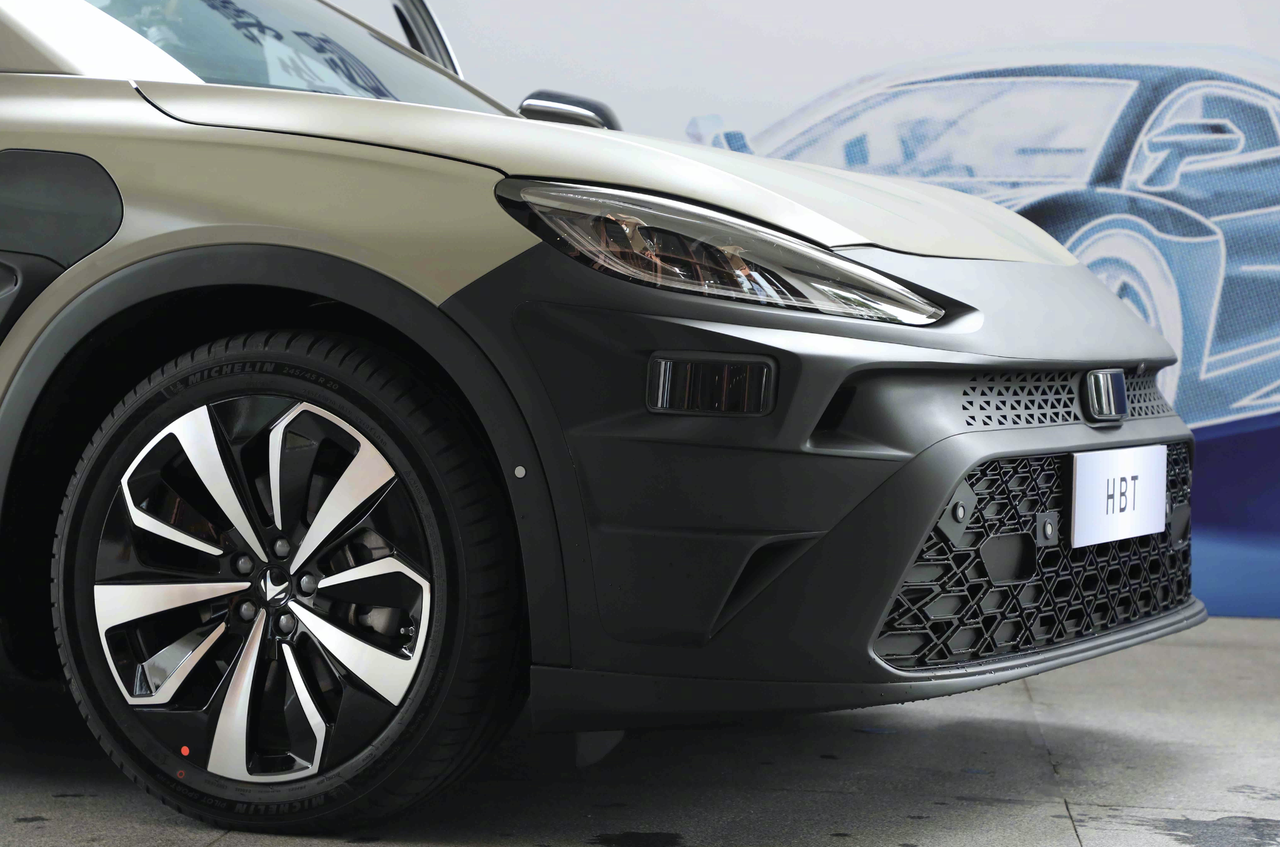 According to the data, each of the three lidars on HBT has a 90° horizontal field of view, which should cover the left, center and right directions. However, as you can see, each lidar on HBT has a 120° field of view horizontally, resulting in an enhanced perception area for the left and right corners of the vehicle where two lidars overlap.
According to the data, each of the three lidars on HBT has a 90° horizontal field of view, which should cover the left, center and right directions. However, as you can see, each lidar on HBT has a 120° field of view horizontally, resulting in an enhanced perception area for the left and right corners of the vehicle where two lidars overlap.
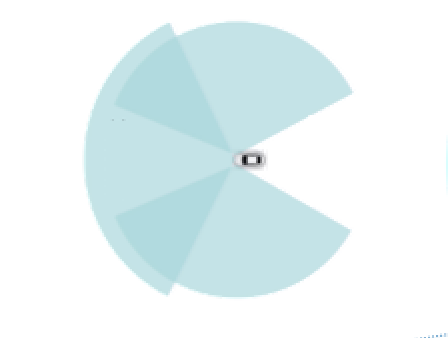
This design further enhances the vehicle’s perception of the front and side blind spots with “ghost probes”. This design also demonstrates HBT’s highly targeted emphasis on safety redundancy.
Now for the millimeter-wave radar, there are a total of 6 millimeter-wave radars on HBT. Two of them are long-range millimeter-wave radars with a maximum detection range of 250 meters in the front and rear directions. There are also 4 corner radars on the vehicle. The detection range of these 6 millimeter-wave radars fully covers a 360° range, and those unfamiliar with the configuration might even mistake them for ultrasonic radars.
HBT actually has 12 ultrasonic radars, which achieve “full-surround” detection around the vehicle at short distances.
That covers the radar perception configuration of HBT, and its visual perception is composed of 9 ADAS cameras and 4 panoramic cameras, for a total of 13 cameras.
The most important front-facing ADAS camera is a pair of medium-distance binocular cameras combined with a long-distance and a short-distance single-lens camera, forming the front 3-distance 4-camera configuration. Worth noting is that all four front-facing cameras use 5-million-pixel high-definition cameras.
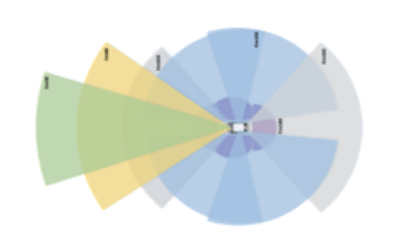
The other 5 ADAS cameras include a side-view combination of 2 5-million-pixel and 2 2-million-pixel cameras, as well as a 2-million-pixel rear-view camera behind the vehicle. As shown in the diagram above, HBT’s visual perception once again achieves a 360° targeted omnidirectional perception.
But that’s not all, beyond the single-vehicle intelligent perception layer, HBT also has V2X and high-precision map additional perception. On data-enabled roads, HBT can make “super-long-distance” preparations and decisions based on traffic conditions beyond the vehicle’s own perception.But there is also a problem. How can HBT’s brain responsible for intelligent driving operate under such a multidimensional perception with different quantities and types?
In fact, on this issue, both Arctic Fox and Huawei considered it earlier than us. The Huawei ADS platform used by HBT is an intelligent driving platform designed to support hardware extension for autonomous driving from level 2 to level 4. Different autonomous driving solutions can be customized according to demand, and in addition to the sensors at the front, computing power is also an important part of it.
In order to process massive sensor data, the ADS computing power used on HBT supports up to 400 TOPS. As a comparison, the Nvidia Xavier computing power used by XPeng P7, which is currently ranked second on our 42Mark assisted driving ranking list, is 30 TOPS, and the FSD HW 3.0 computing power used by the first-ranked Tesla Model 3 is 144 TOPS.
Same Function, Different Levels
Each single item in the multi-dimensional perception on HBT, which includes 3 lidars, 9 ADAS cameras, 6 millimeter wave radars, and high-precision maps, almost reaches the forefront level. After fusing these multi-dimensional, highly redundant perception information, we can take another look at HBT’s autonomous driving capability.
First of all, in terms of functional scenarios, HBT can be said to achieve full coverage of the basic L2 function. The turn signal change lane function, which is described as “L2.5,” is naturally not a problem for HBT.
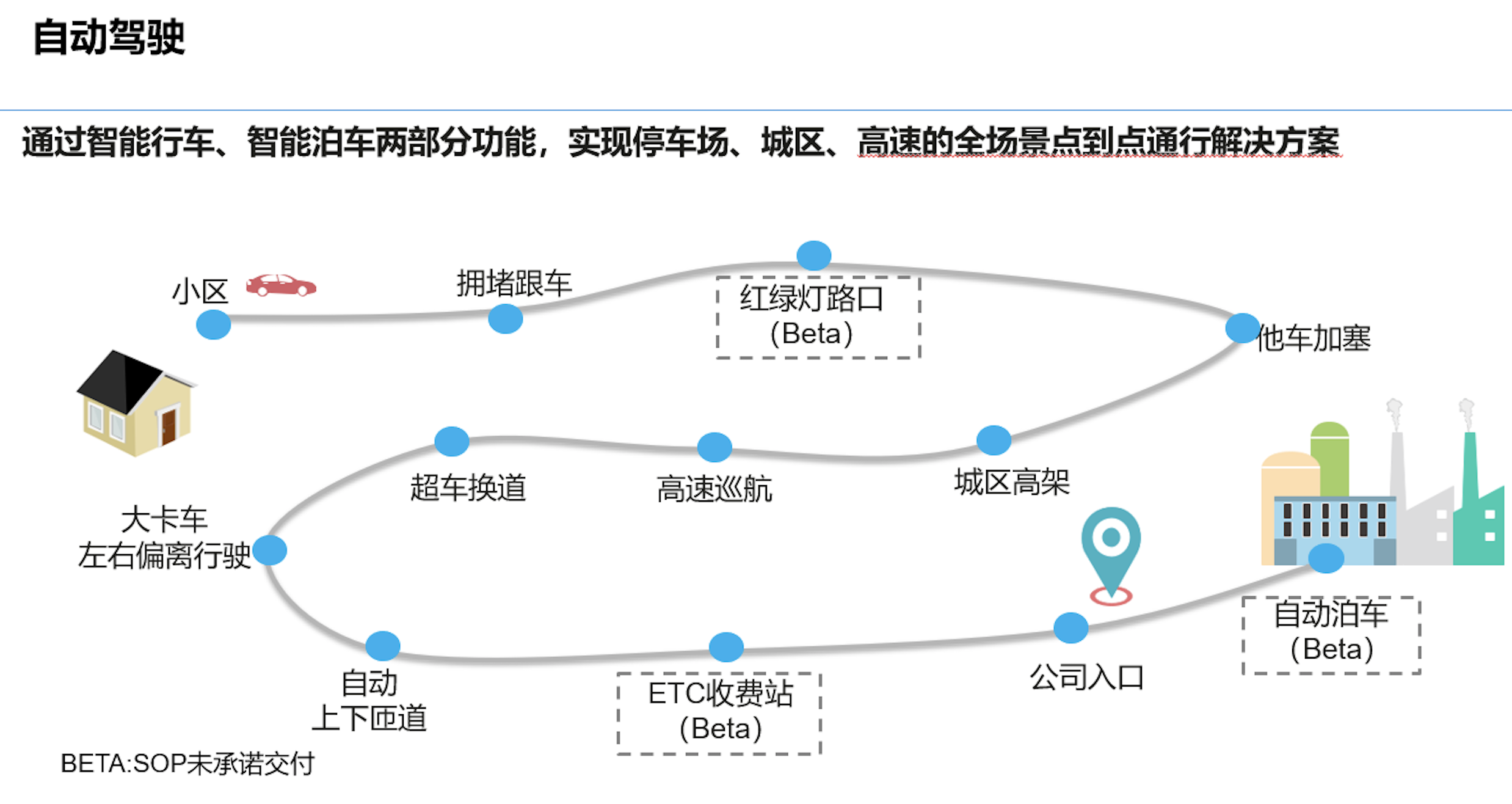
In terms of advanced functions, HBT has the ability to achieve point-to-point navigation and autonomous driving on high-speed and express ways. It can pass through ETC toll stations not only by going up and down ramps or overtaking, but also has the ability to recognize traffic lights and stop/start automatically based on the lights in urban scenarios. Besides, it can also achieve automatic driving in 0-80 km/h congestion scenarios.
In terms of parking projects, HBT can not only complete automatic parking in lateral, vertical, and slant parking spaces, but also in some scenarios, it can achieve valet parking and vehicle summoning for valet parking.
Readers who have read our 42Mark should be quite clear that although they are both called L2, the difference between L2 among different manufacturers is already very huge. One key issue is that there is a far distance between the “existence” and “can be used” of an ADAS function, and there are several mountains between “can be used” and “easy-to-use.”Perception, algorithms, driving data and other factors all play a role, among which perception can be said to be the most fundamental and key factor in determining the ADAS capability and experience. This is also the most anticipated aspect of HBT under the powerful perception.
The 3 laser and 4 millimeter-wave corner radars covering the left, center and right can enable HBT to identify various lateral activities and false positives on the road more accurately, and achieve more accurate avoidance in lane-changing scenarios. The combination of high-precision maps and cameras can identify pedestrian crossings on roads with relevant data, and even change lanes in advance on routes that require it. When encountering wide trucks on highways, HBT can even make certain maneuvers within the lane.
Therefore, with sufficient perception redundancy, it is reasonable to expect the completion degree of HBT’s functions to reach “easy to use”.
In fact, perception redundancy can be regarded as a part of the safety redundancy of the ADS platform. In order to ensure the reliability of intelligent driving systems and provide necessary fallback capabilities under special circumstances, ADS has made the vehicle’s automatic driving sensors, power supply, braking, steering, and communication systems all redundant.
Therefore, after reading this lengthy content, the Alfa Romeo S Huawei HI Edition, as HBT’s mass-produced form, is well-prepared for intelligent driving. Although there is still a short period of time before experiencing the real car of Alfa Romeo S Huawei HI Edition, the information that has been explored has already made people look forward to this product.
Back to the protagonist
Under the “HI” intelligent driving system, the Alfa Romeo S Huawei HI Edition is still a powerful intelligent electric product.
In terms of the most important electric vehicle endurance data for consumers, the Alfa Romeo S with a 93.6 kWh ternary lithium battery and equipped with a heat pump has a NEDC endurance of 708 km. The Alfa Romeo S Huawei HI Edition, jointly created with Huawei, has a 0-100 km/h acceleration time of only 3.8 seconds, and supports 750 V DC fast charging, and is equipped with Car version Hongmeng OS.
Last year’s test drive of the Alfa Romeo T left a deep impression on me in terms of overall driving experience from throttle to brake and chassis. Magna manufacturing indeed brought it excellent overall driving quality, and the Alfa Romeo S series with a lower center of gravity should be able to go further on this basis.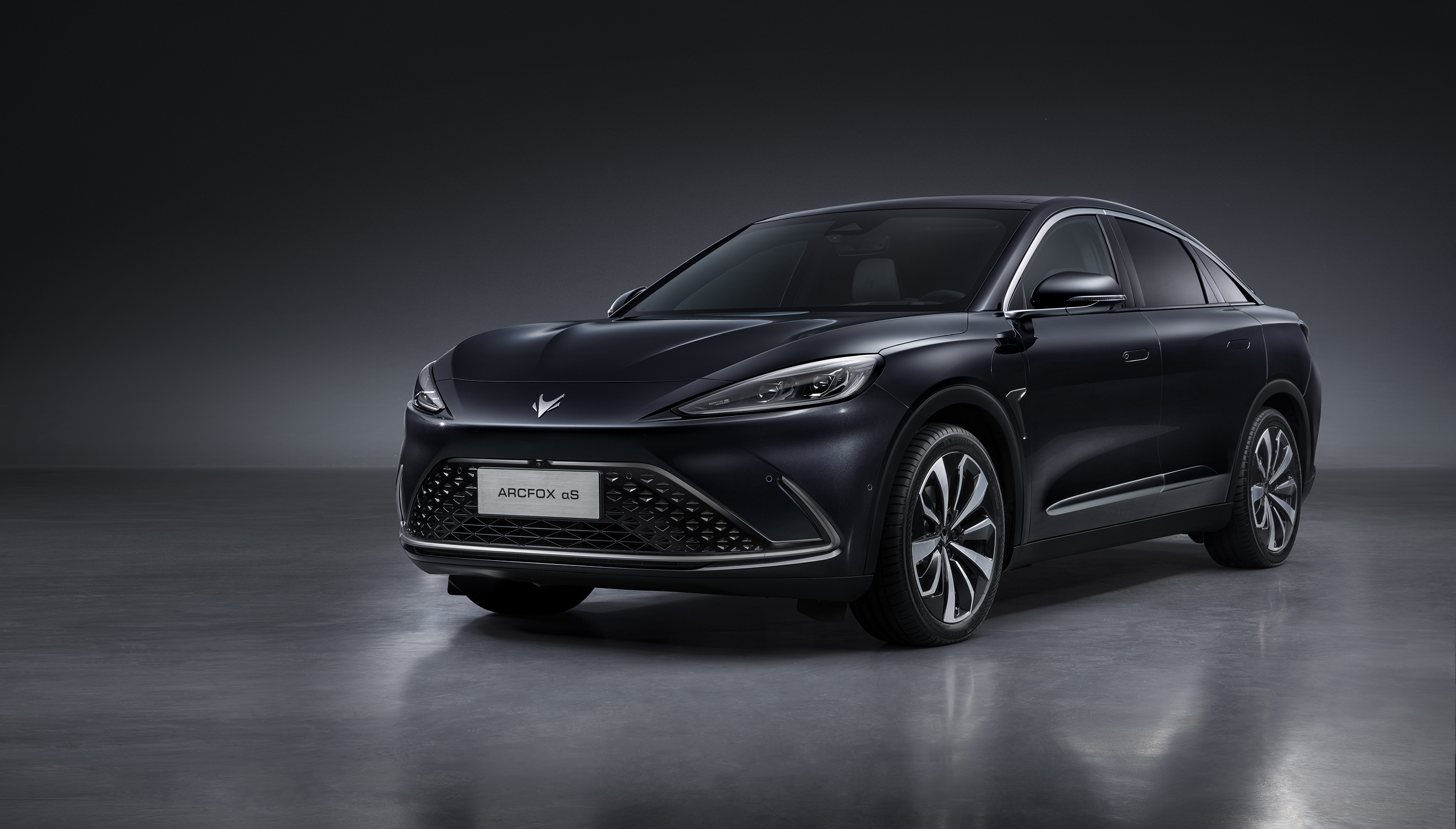
Another thing that is easily overlooked is that the Alpha S Huawei HI version, which has been prepared for more than two years, has not been sold as a futures product, and the new car is very close to delivery. Faced with the XPeng P5, which is also equipped with a lidar system, Polestar Motors and Huawei do not want to give up the title of “the first mass-produced car equipped with a lidar system,” and it remains a suspenseful matter as to who can establish this title between the XPeng P5 and the Alpha S Huawei HI version.
Final Thoughts
2021 is destined to be an important year for the intelligent EV industry. With the release of multiple lidar-equipped models, the competition for autonomous driving has entered a new stage in the industry. Tesla’s awaited FSD Beta has already shown its power in North America, while China has laser radar mass-produced models such as the Alpha S Huawei HI version and the P5 that are ready to launch, which may make this year the first year of the autonomous driving era in the automotive industry.
In addition, this year will also see another wave of new car manufacturing trends. SAIC launched IM, Geely launched Zeekr, Dongfeng brought out the Voyah, and Lei Jun brought out his investment of 108 billion yuan.
At this moment, Huawei has reiterated its attitude that they will not manufacture vehicles but will help enterprises to manufacture good cars.

Developed by Huawei and Polestar Motors in 2019, the Alpha S Huawei HI version, despite receiving little attention in the early stages, might be one of the first to go to market among these models. Its actual performance in autonomous driving capabilities is significant for both Polestar Motors and Huawei. In a broader sense, the Alpha S Huawei HI version will have important reference significance for the autonomous driving cooperation mode and technical direction among domestic manufacturers.
In the current era of flamboyant publicity, I usually do not recommend setting high expectations on a device or product, but this time, I believe your expectations can be appropriately higher.
This article is a translation by ChatGPT of a Chinese report from 42HOW. If you have any questions about it, please email bd@42how.com.
